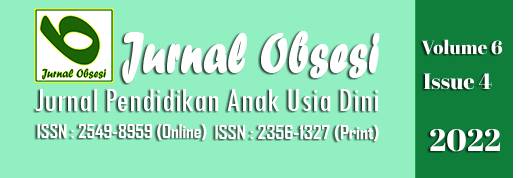- Authors retain copyright and grant the journal right of first publication with the work simultaneously licensed under a Creative Commons Attribution-ShareAlike 4.0 International License that allows others to share the work with an acknowledgement of the works authorship and initial publication in this journal.
- Authors are able to enter into separate, additional contractual arrangements for the non-exclusive distribution of the journals published version of the work (e.g., post it to an institutional repository or publish it in a book), with an acknowledgement of its initial publication in this journal.
- Authors are permitted and encouraged to post their work online (e.g., in institutional repositories or on their website) prior to and during the submission process, as it can lead to productive exchanges, as well as earlier and greater citation of published work (See The Effect of Open Access).
Intercultural Communication: Strategy to Improve School Competitiveness Based on Public Demand
DOI:
https://doi.org/10.31004/obsesi.v6i4.2123Keywords:
strategic institutions, increasing competitiveness, public demandAbstract
Having a strategy to increase the institution's competitiveness provides positive energy for an institution to develop the institution. This study analyzes and examines strategies to increase competitiveness through public demand intermediaries at RA Masyitoh III Sumberanyar Paiton Probolinggo. This research uses a qualitative approach. Technical analysis of the data through interviews, observation, and documentation is then carried out reduction which is processed on the display of the last data drawing conclusions. Research shows results; the strategy of increasing the competitiveness of public demand in RA Masyitoh III is carried out by creating school branding, public engagement, and continuous improvement through evaluation of the implementation of school branding and public engagement that has been running. From the study results, the public demand strategy carried out by RA Masyithoh III became a breakthrough for institutions at the level in the Paiton region that do not have a marketing strategy. The implications for the institution are that the institution is increasingly recognized by the broader community with increasingly highlighted characteristics. The implications for teachers are that teachers will further increase their competence in their respective fields to keep up with the institution's development.
Downloads
References
Ahmad, Z., & Masykuroh. (2021). Strategi Kepala Sekolah dalam Menerapkan Program Perilaku Hidup Bersih dan Sehat (PHBS) pada Anak Usia Dini. Jurnal Pendidikan Anak, 10(1), 59-68. https://doi.org/10.36722/jaudhi.v3i1.588
Alma, B., & Hurriyati, R. (2015). Manajemen Corporate & Strategi Pemasaran Jasa Pendidikan Fokus pada Mutu dan Layanan Prima. In Bandung: Alfabeta (pp. 11-59).
Amalia, V. (2020). Strategi Komunikasi Humas Dalam Meningkatkan Public Trust Di Perguruan Tinggi(Studi Kasus di Universitas Nurul Jadid, Paiton, Probolinggo). AL-TANZIM: Jurnal Manajemen Pendidikan Islam, 4(1), 13-23.
https://doi.org/10.33650/al-tanzim.v4i1.812
Amir, & Saleha, L. (2021). Pengelolaan APE Berbahan Limbah untuk Meningkatkan Kecerdasan Kognitif Anak. Jurnal Pendidikan Anak Usia Dini, 5(2), 1382-1395.
https://doi.org/10.31004/obsesi.v5i2.763
Aneta, Y. (2012). Strategi Publik Dalam Dinamika Permintaan Dan Penawaran. Jurnal Pelangi Ilmu, 5(1), 1-12.
El Iq Bali, M. M., Firdaus, S., Wijaya, M., Al Mursyidi, R. A., Haqiki, M. W., & Abidin, Z. (2020). Learning management; identifying learning styles of language learners in madrasah. Proceedings of the International Conference on Industrial Engineering and Operations Management, August, 3783-3790.
Farizal, A. (2021). Image Building Through Public Relation Management: A Case Study On Private Primary School In Bantul. International Journal of Educational Management and Innovation, 2(1), 1-30. https://doi.org/10.12928/ijemi.v2i1.2248
Fidhiyanti, E. F., Katni, & Abidin, N. (2019). Penanaman Karakter Islami Berbasis School Branding di SMPN 3 Slahung Ponorogo. Al-Idarah: Jurnal Kependidikan Islam, 8(2), 324-337. https://doi.org/10.24042/alidarah.v8i2.3423
Firdausiah, F. (2021). Implementation of Role-Playing Games in Overcoming Introverted Children. AL-ISHLAH: Jurnal Pendidikan, 13(2), 1394-1402. https://doi.org/10.35445/alishlah.v13i2.629
Hadiansyah, A., Fidesrinur, F., & Firmiana, M. E. (2015). Strategi Pemberdayaan Masyarakat dalam Pendirian Lembaga PAUD. Jurnal Al-Azhar Indonesia Seri Humaniora, 3(1), 55-68. https://doi.org/10.36722/sh.v3i1.197
Haerullah, & Elihami. (2020). Dimensi Perkembangan Pendidikan Formal dan Non Formal. Jurnal Edukasi Nonformal, 1(1), 199-207.
Ita, E. (2018). Manajemen Pembelajaran Pendidikan Anak Usia Dini Di Tk Rutosoro Kecamatan Golewa Kabupaten Ngada Flores Nusa Tenggara Timur. Jurnal Dimensi Pendidikan Dan Pembelajaran, 6(1), 45-52.
Maisah, Mahdayeni, Maryam, & Alhaddad, M. R. (2020). Penerapan 7P Sebagai Strategi Pemasaran Pendidikan Tinggi. Jurnal Ekonomi Manajemen Sistem Informasi, 1(4), 325-333. https://doi.org/10.31933/jemsi.v1i4.116
Margareta, R. T. E., Ismanto, B., & Sulasmono, B. S. (2018). Strategi Pemasaran Sekolah Dalam Peningkatan Minat Peserta Didik Berdasarkan Delta Model. Kelola: Jurnal Manajemen Pendidikan, 5(1), 1-14. https://doi.org/10.24246/j.jk.2018.v5.i1.p1-14
Morissan. (2014). Teori Komunikasi Individu Hingga Massa. In Jakarta: Kencana Prenadamedia Group.
Rohanah, A., & Agustina, S. (2018). Promotion Based on Emotional Branding At Kineruku Library. Edulib, 8(2), 135-155. https://doi.org/10.17509/edulib.v8i2.13552
Sa'dullah, A., & Supriyatno, T. (2021). Peningkatan Mutu Sumber Daya Manusia Lembaga Pendidikan Islam Berbasis Sustainable Development Goals Di Yayasan Pendidikan Anak Saleh Kota Malang. Jurnal Manajemen Pendidikan Islam Is Licensed under The, 5(1), 182-199. https://doi.org/10.32478/evaluasi.v5i1.634
Setyowahyudi, R. (2020). Pemikiran Ki Hajar Dewantara dan Maria Montessori tentang Pendidikan Anak Usia Dini. PAUDIA : Jurnal Penelitian Dalam Bidang Pendidikan Anak Usia Dini, 9(1), 17-35. https://doi.org/10.26877/paudia.v9i1.5610
Syafitri, W., & Costaner, L. (2019). Pelatihan Branding Sekolah Pada Sosial Media di SMP IT Madani. Dinamisia : Jurnal Pengabdian Kepada Masyarakat, 3(1), 158-166. https://doi.org/10.31849/dinamisia.v3i1.2804
Syam, A. F., & Damayanti, E. (2020). Capaian Perkembangan Bahasa Dan Stimulasinya Pada Anak Usia 4 Tahun. PAUDIA : Jurnal Penelitian Dalam Bidang Pendidikan Anak Usia Dini, 9(2), 71-88. https://doi.org/10.26877/paudia.v9i2.6235
Trisnantari, H. E. (2018). Pemberdayaan Guru Pendidikan Anak Usia Dini (Paud) Di Kecamatan Kedungwaru Dalam Membentuk Karakter Anak Yang Kreatif. J-ADIMAS (Jurnal Pengabdian Kepada Masyarakat), 2(1), 1-9.
Ulfah, F. (2015). Manajemen PAUD: Pengembangan Jejaring Kemitraan Belajar. In Yogyakarta: Pustaka Pelajar (p. 207).
Wahid, A. H., Rozi, F., Baharun, H., Hidayati, W., & Bon, A. T. (2021). Information Technology in the Development of Language Aspects of Early Childhood.
Wahjosumidjo. (2011). Kepemimpinan Kepala Sekolah: Tinjauan Teoritik dan Permasalahannya. In Jakarta:Rajawali Press (p. 96).
Watini, S. (2019). Implementasi Model Pembelajaran Sentra pada TK Labschool STAI Bani Saleh Bekasi. Jurnal Obsesi : Jurnal Pendidikan Anak Usia Dini, 4(1), 110-123.
https://doi.org/10.31004/obsesi.v4i1.190
Wibowo, A. (2021). Kepemimpinan Perempuan dalam Menciptakan Sekolah Ramah Anak. Quality, 9(1), 87-102. https://doi.org/10.21043/quality.v9i1.10109
Widat, F., & Efanadari, E. (2021). Implementasi Model Pembelajaran Picture and Picture dalam Meningkatkan Hasil Belajar Anak Usia Dini. Murobbi; Jurnal Ilmu Pendidikan, 5(1), 128-142. https://doi.org/10.21107/pgpaudtrunojoyo.v8i2.10691





